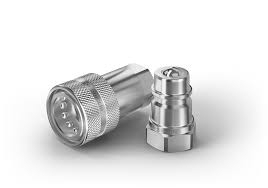How to Choose the Right Quick Coupler for Your Machinery

Selecting the right Quick Coupler for your machinery is essential to achieving maximum efficiency, safety, and productivity on construction sites. With the wide range of excavators, attachments, and operating environments, the coupler you choose must be reliable, durable, and compatible with your equipment. Investing in the right system not only improves work speed but also reduces manual labor, enhances operator safety, and minimizes machine downtime. Here is a detailed guide on how to make the right choice when purchasing a Quick Coupler.

The first factor to consider is compatibility. Your Quick Coupler must match the weight class, model, and hydraulic configuration of your excavator or loader. A mismatch may result in attachment instability, reduced performance, or even serious safety risks. Before purchasing, always check manufacturer specifications, installation requirements, and lifting capabilities. Some couplers are universal and can fit multiple machine models, while others are designed for specific brands or hydraulic systems. Selecting a coupler that meets your machine’s operating parameters ensures smooth performance and long service life.
Next, consider the type of coupler that aligns with your operational needs. Quick couplers are generally available in two main types: manual and hydraulic. Manual versions require operators to lock the attachment by hand, which is suitable for smaller equipment or job sites with fewer attachment changes. However, hydraulic couplers are more modern and efficient, allowing operators to switch attachments directly from the cabin. This saves time, reduces physical strain, and enhances overall productivity. Construction companies handling frequent bucket or tool changes will benefit significantly from choosing a hydraulic Quick Coupler.
Safety features are another crucial aspect when selecting a coupler. Modern machinery must meet strict safety regulations, and an unsafe or outdated coupler exposes operators and site personnel to unnecessary hazards. Look for couplers with secure locking mechanisms, visual or audible indicators, and redundant safety systems that prevent accidental attachment releases. Many high-quality couplers also include check valves and safety pins that act as backup locking features. Ensuring that your Quick Coupler meets international safety standards will protect both your operators and your equipment investment.
Durability and build quality should also influence your decision. A well-built coupler must withstand harsh working conditions such as abrasion, dust, mud, and heavy-duty impact. Check whether the coupler is made from high-grade steel and whether internal components are resistant to wear and corrosion. Durable couplers reduce maintenance needs, last longer in demanding environments, and provide consistent performance across different projects. It is also helpful to choose a brand with good aftermarket support, including easy availability of replacement parts and responsive customer service.
Maintenance requirements are another point to consider. A good Quick Coupler should be low-maintenance, easy to inspect, and simple to service. Hydraulic couplers should have accessible grease points, protected hydraulic lines, and well-designed release mechanisms that remain reliable over time. Operators should also be trained in routine inspection procedures to ensure ongoing safety and efficiency. Proper maintenance not only improves performance but also extends the service life of the coupler and attached tools.
Finally, cost and long-term value should guide your decision. While cheaper couplers may seem appealing, they may lack essential safety features, durability, or compatibility. Higher-quality options offer better performance, reduced downtime, and fewer repair expenses over their lifespan. It is better to see the investment not as a one-time purchase but as a long-term solution that pays off through improved productivity and reduced operational risks.
Choosing the right Quick Coupler involves balancing machine requirements, jobsite demands, safety considerations, and long-term value. By evaluating compatibility, coupler type, durability, maintenance needs, and budget, operators can ensure that their equipment performs at its best every day.
- Questions and Answers
- Opinion
- Motivational and Inspiring Story
- Technology
- Live and Let live
- Focus
- Geopolitics
- Military-Arms/Equipment
- Sicurezza
- Economy
- Beasts of Nations
- Machine Tools-The “Mother Industry”
- Art
- Causes
- Crafts
- Dance
- Drinks
- Film/Movie
- Fitness
- Food
- Giochi
- Gardening
- Health
- Home
- Literature
- Music
- Networking
- Altre informazioni
- Party
- Religion
- Shopping
- Sports
- Theater
- Health and Wellness
- News
- Culture

